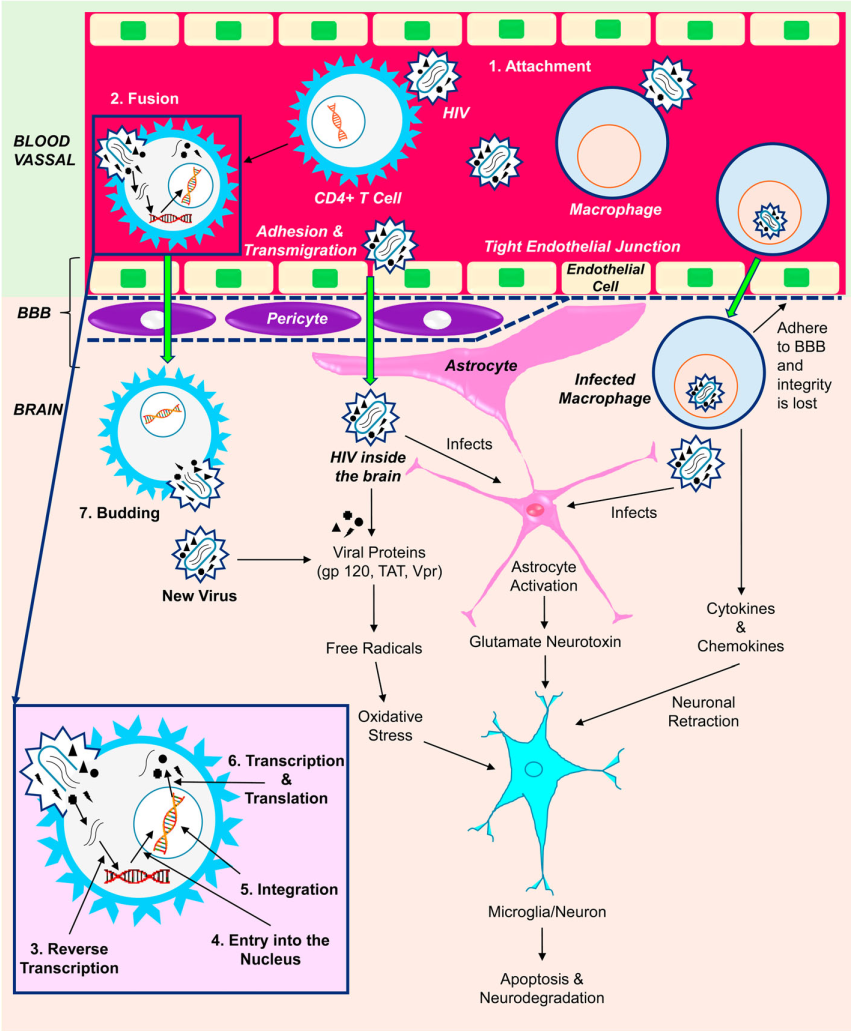Molecular Biomedicine | Nose to brain delivery of antiretroviral drugs in the treatment of neuroAIDS

Open the phone and scan
More than 35 years ago, HIV (Human Immunodeficiency Virus) was reported as a unique infection with apparent death. Nowadays, NeuroAIDS (Neuro Acquired Immunodeficiency Syndrome) or HIV (Human Immunodeficiency Virus) associated neuronal abnormality is continuing to be a significant health issue among AIDS patients even under the treatment of combined antiretroviral therapy (cART), mainly due to the block of blood-brain barrier (BBB). In this review, researchers focused on the potential of nasal route for the effective delivery of antiretroviral nanoformulations directly from nose to the brain in treatment of neuroAIDS.

Injury and damage to neurons of the brain are the prime causes of neuroAIDS, which happens due to the ingress of HIV by direct permeation across the blood-brain barrier (BBB) or else via peripherally infected macrophage into the central nervous system (CNS)(Fig. 1). The BBB performs as a stringent barricade for the delivery of therapeutics drugs.
The intranasal route of drug administration exhibits as a non-invasive technique to bypass the BBB for the delivery of antiretroviral drugs and other active pharmaceutical ingredients inside the brain and CNS. This method is fruitful for the drugs that are unable to invade the BBB to show its action in the CNS and thus erase the demand of systemic delivery and thereby shrink systemic side effects. Drug delivery from the nose to the brain/CNS takes very less time through both olfactory and trigeminal nerves. Intranasal delivery does not require the involvement of any receptor as it occurs by an extracellular route. Nose to brain delivery also involves nasal associated lymphatic tissues (NALT) and deep cervical lymph nodes.
However, very little research has been done to explore the utility of nose to brain delivery of antiretroviral drugs in the treatment of neuroAIDS. For example, there is not a very clear view till now, whether the available drug in the brain is transpoted from the nasal cavity after its release from the carrier system or the whole drug carrier system is translocated into the CNS through olfactory and trigeminal nerve pathways from the nasal cavity. Thus, more emphasis has to put on research to determine the exact transport mechanism of nanocarriers to the brain and their biological fate.

Fig. 1 Mechanism of viral infection and neurodegradation in neuroAIDS
Article Access: https://link.springer.com/article/10.1186/s43556-020-00019-8
Website for Molecular Biomedicine: https://www.springer.com/journal/43556
Looking forward to your contributions


